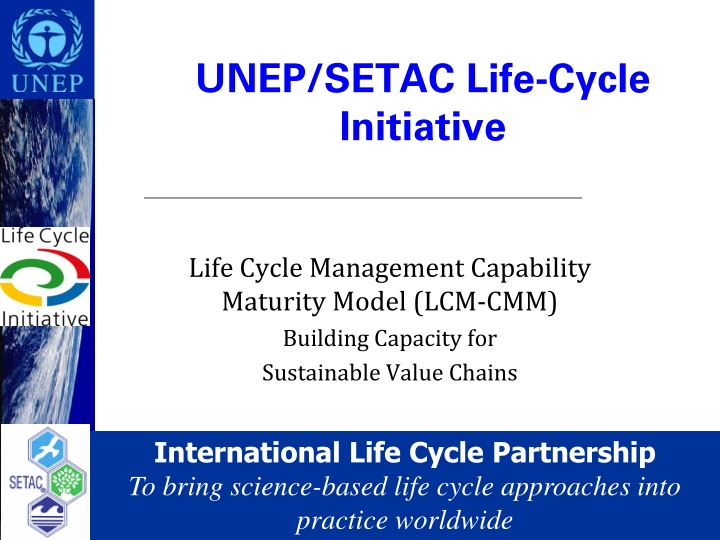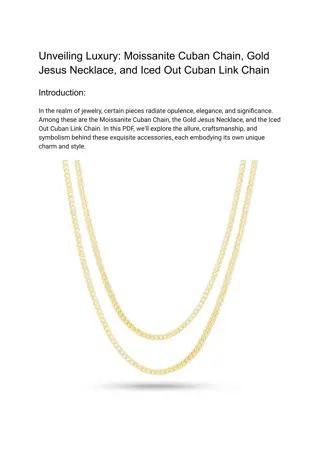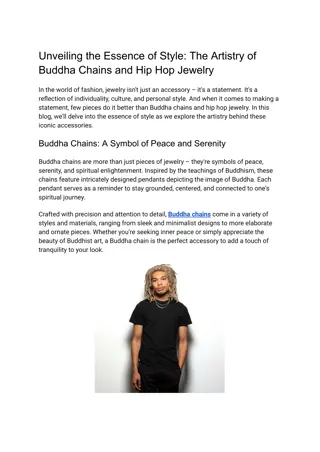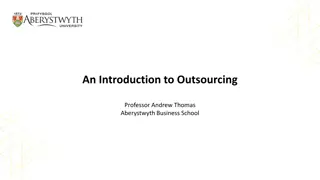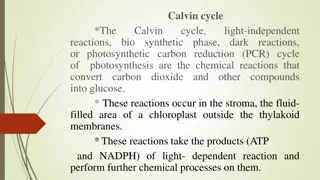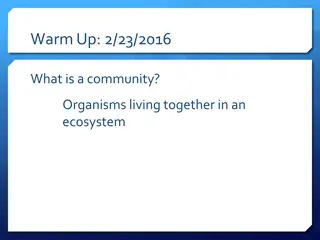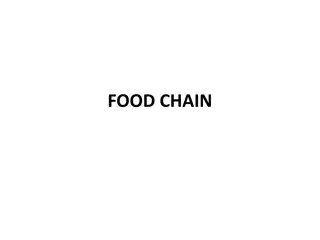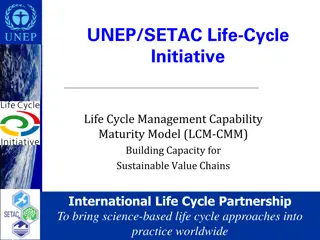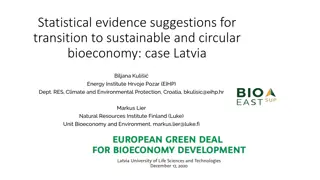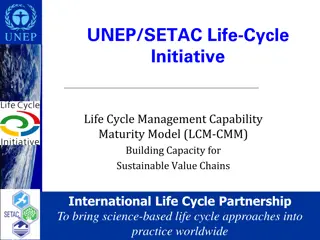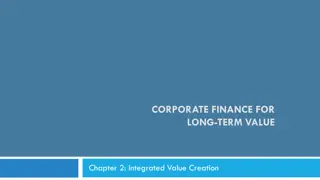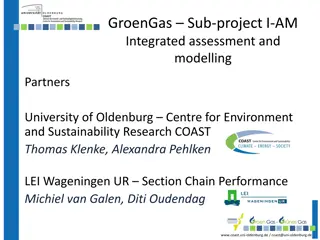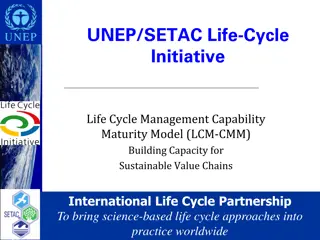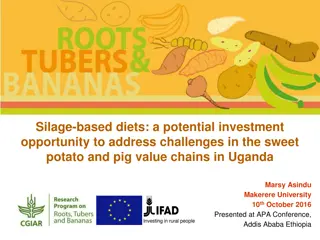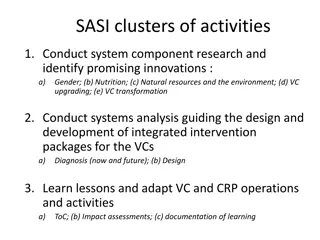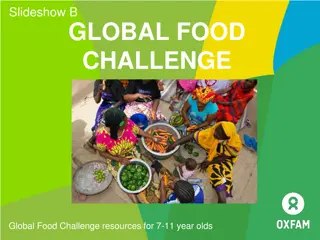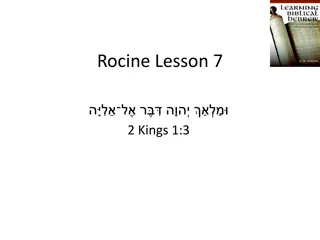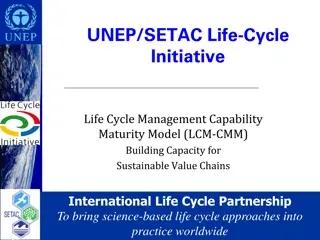Sustainable Value Chains and Business Context in Life Cycle Management
The UNEP/SETAC Life-Cycle Initiative focuses on building capacity for sustainable value chains worldwide through the Life Cycle Management Capability Maturity Model. Understanding the competitive, environmental, and business contexts is crucial for implementing science-based life cycle approaches effectively. From product system life cycles to cotton textiles, addressing environmental and social issues is vital for creating value and capturing profit in the value chain.
Download Presentation

Please find below an Image/Link to download the presentation.
The content on the website is provided AS IS for your information and personal use only. It may not be sold, licensed, or shared on other websites without obtaining consent from the author.If you encounter any issues during the download, it is possible that the publisher has removed the file from their server.
You are allowed to download the files provided on this website for personal or commercial use, subject to the condition that they are used lawfully. All files are the property of their respective owners.
The content on the website is provided AS IS for your information and personal use only. It may not be sold, licensed, or shared on other websites without obtaining consent from the author.
E N D
Presentation Transcript
UNEP/SETAC Life-Cycle Initiative Life Cycle Management Capability Maturity Model (LCM-CMM) Building Capacity for Sustainable Value Chains International Life Cycle Partnership To bring science-based life cycle approaches into practice worldwide
UNDERSTANDING THE COMPETITIVE CONTEXT
ENVIRONMENTAL CONTEXT Each industry sector has unique set of impacts, public issues, etc. Each position (tier) in supply chain has own set of constraints & opportunities Each facility must address concerns & priorities of host community and site specific environmental factors
BUSINESS CONTEXT Value Proposition Attributes customer uses to evaluate product offering Strategy What company will do better/ differently to achieve competitive advantage Business Model How company is organized to capture financial value from its activities, products and services
PRODUCT SYSTEM LIFE CYCLE factory Wstnghse lg_prius-lg landfill storm-industry appliances%2520collage1 industry distribution truck industry Visible companies Green procurement Design standards Sustainability reporting Visible industries Best available technology, Industry code of conduct Visible products Eco- labels, green marketing Visible waste streams Take-back & recycle What is visible in your value chain?
COTTON TEXTILES Environmental and Social Issues Water Use Pesticides Worker health Bulky waste Child labor Soil Dyes & bleaches degradation 1. 2. Where are you in value chain? Which practices are you ready to adopt? Bed & Furrow Patagonia Common Threads Green Chemistry Fair labor practices Integrated pest mgmt.
COTTON TEXTILES BusinessValue Chain $0.32 $0.76 $1.32 $3.80 $25.00/kg Finished Product Seed Cotton Raw Fiber Yarn Retail 1. 2. Where is profit captured in value chain? What is your ability to shift value capture? Bed & Furrow Patagonia Common Threads Green Chemistry Fair labor practices Integrated pest mgmt.
Textco Inc. Hypothetical case study- fabric producer, weaving, dyeing, bleaching, etc. Supplier to branded consumer goods company Customer has requested data for eco- labels & carbon footprint goals Operations manager has been tasked with developing plan to respond
EXERCISE #1 FACILITY PROFILE Child labor Pesticides Water use Chemicals- dyes, bleaches Soil degradation, habitat destruction Oxidative desizing Hydrogen peroxide Caustic soda Bleaching Peroxide, complexing agents surfactants Spun yarn Singeing off- gas Wet chemical proc. COD, metal complexes dyes Scouring Alkali, auxiliary chemicals Nat gas, electricity Finished fabric Continuous pad dyeing Water, dyes Fixation by steam Wet processes Steam boiler Wastewater treatment See companion Worksheet #1
LIFE CYCLE SCAN Harvest/ Extract Manufacture Distribute/ Use/ Service EOL Mgmt. Water use Landfill disposal Materials Wash & dry Energy Pesticides Dyes, bleaches Detergent, softeners Chemicals Child labor Soil degradation Habitat loss Child labor Short fashion life of garment Other
SWOT MATRIX Maturity assessment INTERNAL FACTORS Strength Weakness Growth Positioning Org. Development Opportunity EXTERNAL FACTORS Use strengths to take advantage of opportunities Overcome weaknesses by taking advantage of opportunities Positioning Org. Development Risk Mgmt. Threat Use strengths to avoid threats Minimize weakness and avoid threats LCA
EXTERNAL FACTORS THREATS OPPORTUNITIES Tighter water quality limits Chemicals of concern Organic cotton Green chemistry / substitution Organic cotton See companion Worksheet #2
CAN ENVIRONMENTAL INITITAIVES ADD TO VALUE PROPOSITION? Costs- Do environmental drivers influence cost structure? Customer value- Are we in a position to communicate environmental benefits? Risk- Are we exposed or in a position to assume risk for a fee? Resources & capabilities- Are we in a position to leverage technical strengths? Market power- Are we in a position to exercise power to drive higher standards? Information- Are we in a position to control the flow? Do customers want environmental data?
